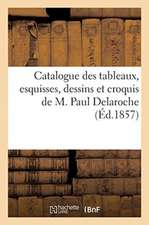How to Read Buddhist Art: The Metropolitan Museum of Art - How to Read
Autor Kurt A. Behrendten Limba Engleză Paperback – 2 ian 2020
An indispensable introduction to the evolution of Buddhist imagery from its origins in India through its spread to China, Japan, and South Asia
For more than 2,000 years, sublime works of art have been created to embody essential aspects of Buddhist thought, which developed and evolved as its practice spread from India to East Asia and beyond. How to Read Buddhist Art introduces this complex visual tradition to a general audience by examining sixty seminal works. Beginning with the origins of representations of the Buddha in India, and moving on to address the development of Buddhist art as the religion spread across Asia, this book conveys how Buddhist philosophy affected artistic works and practice across cultural boundaries.
Reliquaries, sculptures, and paintings produced in China, the Himalayas, Japan, Korea, and South and Southeast Asia provide insight into the rich iconography of Buddhism, the technical virtuosity of their makers, and the social and political climate in which they were created. Beautiful photographs of the artworks, maps, and a glossary of the major Buddhist deities offer an engaging and informative setting in which readers—regardless of their familiarity with Buddhism—can better understand the art related to the religion’s practices and representations.
For more than 2,000 years, sublime works of art have been created to embody essential aspects of Buddhist thought, which developed and evolved as its practice spread from India to East Asia and beyond. How to Read Buddhist Art introduces this complex visual tradition to a general audience by examining sixty seminal works. Beginning with the origins of representations of the Buddha in India, and moving on to address the development of Buddhist art as the religion spread across Asia, this book conveys how Buddhist philosophy affected artistic works and practice across cultural boundaries.
Reliquaries, sculptures, and paintings produced in China, the Himalayas, Japan, Korea, and South and Southeast Asia provide insight into the rich iconography of Buddhism, the technical virtuosity of their makers, and the social and political climate in which they were created. Beautiful photographs of the artworks, maps, and a glossary of the major Buddhist deities offer an engaging and informative setting in which readers—regardless of their familiarity with Buddhism—can better understand the art related to the religion’s practices and representations.
Published by The Metropolitan Museum of Art/Distributed by Yale University Press
Preț: 157.07 lei
Nou
Puncte Express: 236
Preț estimativ în valută:
30.06€ • 31.30$ • 25.40£
30.06€ • 31.30$ • 25.40£
Carte disponibilă
Livrare economică 17 februarie-03 martie
Livrare express 31 ianuarie-06 februarie pentru 34.39 lei
Preluare comenzi: 021 569.72.76
Specificații
ISBN-13: 9781588396730
ISBN-10: 1588396738
Pagini: 136
Ilustrații: 110 color illus.
Dimensiuni: 203 x 267 x 12 mm
Greutate: 0.64 kg
Editura: Yale University Press
Colecția Metropolitan Museum of Art
Seria The Metropolitan Museum of Art - How to Read
ISBN-10: 1588396738
Pagini: 136
Ilustrații: 110 color illus.
Dimensiuni: 203 x 267 x 12 mm
Greutate: 0.64 kg
Editura: Yale University Press
Colecția Metropolitan Museum of Art
Seria The Metropolitan Museum of Art - How to Read
Notă biografică
Kurt Behrendt is associate curator in the Department of Asian Art at The Metropolitan Museum of Art.

















